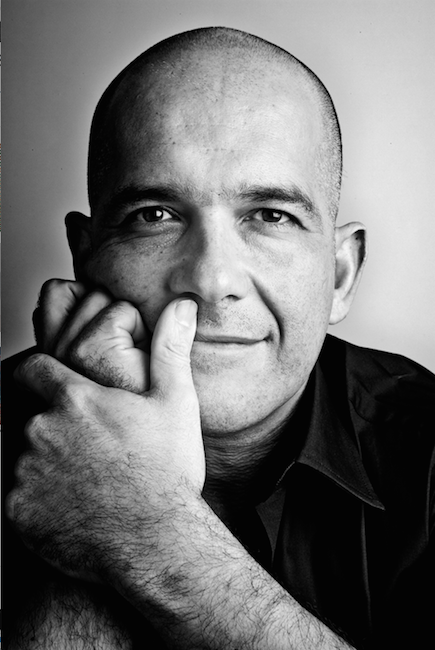Today, starchitects have become mass media’s cyphers for architecture at large, and are still pretty much part of a complex field of relationships and interactions. Unlike artists, who occasionally affirm themselves through a radical break with their predecessors and peers, architects are mostly imbedded in a web of affiliations and influences that are shared with both masters and disciples. In this context, when faced with the need to produce an exhibition that would retain mass-appeal and yet reveal other forces at work, the curator – yours truly – found it interesting to explore the concept of an ‘expanded monograph’ – or, if one wants, a group show that would gravitate round the impact and influence of a key figure. In another life, such a show could have been Spin-Off OMA. Here, instead, it turned into A Japanese Constellation: Toyo Ito, SANAA, and Beyond.

Showroom H Masuya in Niigata, Japan Akihisa Hirata, 2006–07
© Nacása & Partners Inc.
Naturally, there are many important architects today whose networks of influence could be put under such a lens. However, there are plenty of reasons to look towards Japan at this moment in time. The last time MoMA made a survey of ‘national’ architecture was 10 years ago, and the focus then was on the coherence and high quality that Spanish architecture had attained by the late 1990s. Terrence Riley’s On Site: New Architecture in Spain summoned a diversity of highlights from a resonating collective culture – just before ‘the party was over’ and the economic crisis pulverised opportunities to exercise talent. Contrarily, after the turn of the century, Japanese architecture slowly emerged from its country’s own economic crash – and the financial stagnation that seems to be expanding everywhere – to again experience considerable fascination worldwide.

House NA in Tokyo
Sou Fujimoto Architects, 2007–11 © Iwan Baan
Tellingly, not a week has passed over the last decade in which yet another sublime experiment on domestic architecture did not surface in a digital publication. Such an abundant production unveils the fact that opportunities for Japanese invention are limited in scale, but remains reason enough for an exhibition to also be staged in a significant museum or institution in Europe. It may well signal that, while other architectural ‘scenes’ are still clinging to modi operandi that echo the past, Japanese architects are paving the way for models of practice that relate better to the near future. As such, when visiting A Japanese Constellation one should not only seek stunning beauty and perceptual experiments with transparency, tectonics, and technology. While there is plenty of that, one should also be on the lookout for a sense of ethical and collective responsibility that, beyond all probability, retains the uprooting qualities of a genuine avant-garde. The exhibition features two of the six Pritzker Prizes that Japan has seized over the last couple of decades. Along with Tadao Ando and a few others, Toyo Ito is a key figure in contemporary Japanese architecture. Since the early 1970s, he has restlessly reinvented his own approach to architecture and has also been a pedagogue, an influential opinion maker, and a direct inheritor of the so-called ‘last modernist avant-garde’ known as the Japanese Metabolists. Kazuyo Sejima, founder of SANAA together with the younger Ryue Nishizawa, has taken to new heights of re nement and sophistication the teachings of Ito, with whom she has worked. For quite some time, her radical architectural language and insightful disruption of modernist credos – such as that of the most basic and uninspiring functionalism – made her quite simply the best architect on the planet.
As often happens, these masters could have simply focused on their own singularity; they could have scorched the eld around them. Instead, they laid the groundwork upon which a whole new generation could ourish. Rather than simply becoming the solitary, burning stars that fuel today’s debate on starchitecture, they gave way to a constellation of many different luminaries. Akihisa Hirata, who was a crucial collaborator in Ito’s office; Junya Ishigami, who gained prominence after his passage through Sejima’s practice; and Sou Fujimoto, who although independent has been sponsored and supported by both architects, appear in the show as prime examples of a constellation or lineage of architects that has exerted considerable sway inside and outside Japan. Ultimately, the ‘expanded monograph’ now on view at MoMA is but a hint at how, beyond the impact of singular authors, the gravitational pull that holds these architects together is something that can bear extraordinary fruit anywhere.
A Japanese Constellation: Toyo Ito, SANAA, and Beyond is at MoMA in New York from 13 March to 04 July 2016.
Architect and writer Pedro Gadanho has recently been appointed director of MAAT, the new Museum of Art, Architecture and Technology in Lisbon, Portugal following his role as Curator in the Department of Architecture and Design at the Museum of Modern Art in New York.






